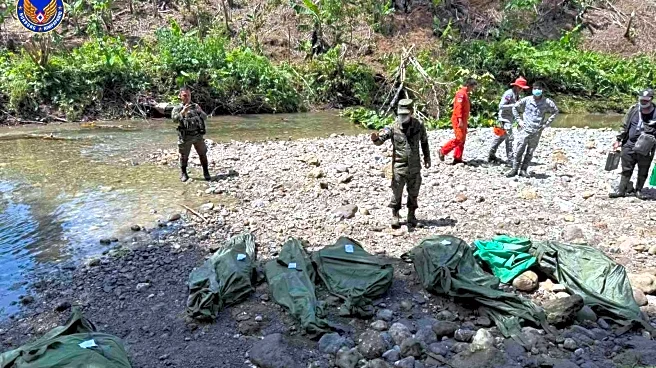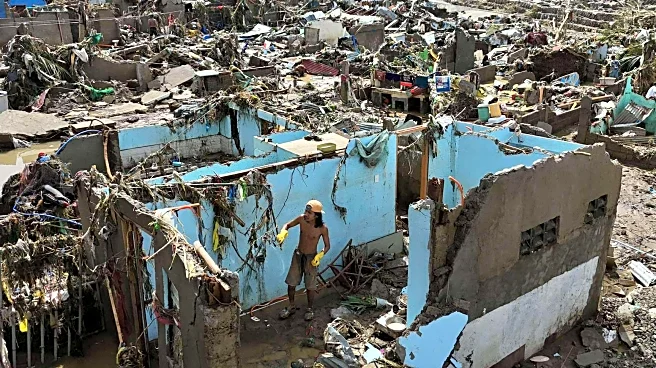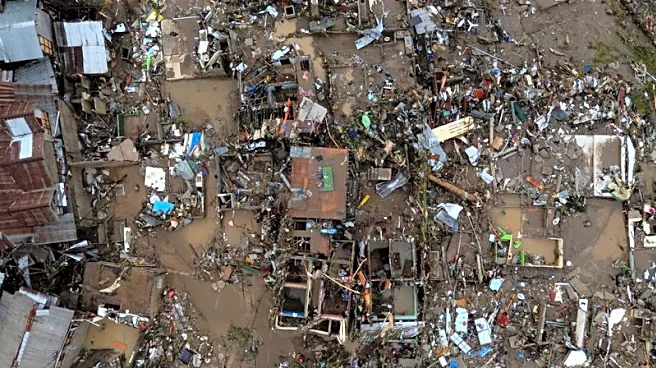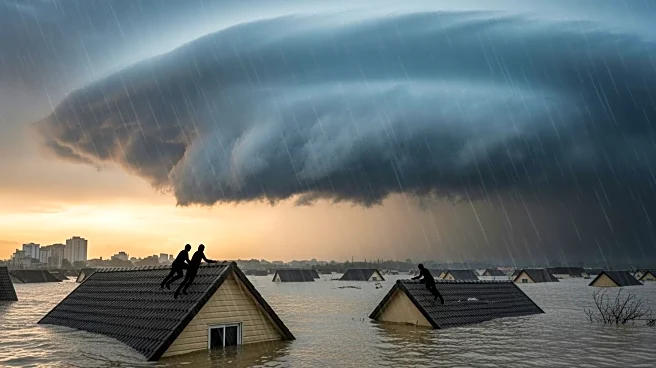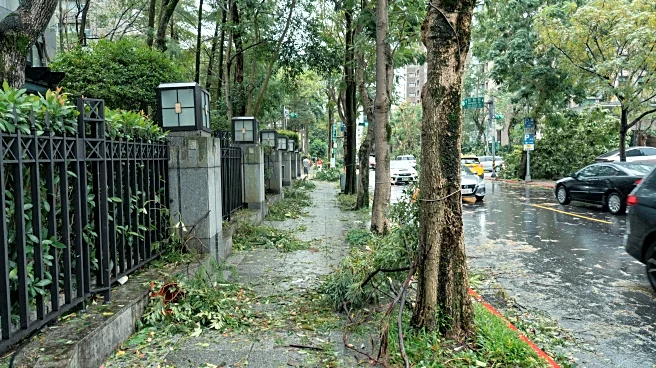What's Happening?
Typhoon Kalmaegi has caused significant destruction in the Philippines, leading to a national state of emergency. The storm, also known locally as Typhoon Tino, has resulted in at least 114 deaths and displaced over 560,000 residents. The typhoon struck
the Philippines on Tuesday, prompting mass evacuations and severe flooding. As the storm moved across the South China Sea, it made landfall in Vietnam, where officials recorded wind speeds of up to 82 mph. The U.S. Embassy in Vietnam has issued warnings about potential flooding risks, particularly in Ho Chi Minh City.
Why It's Important?
The impact of Typhoon Kalmaegi highlights the vulnerability of Southeast Asian countries to severe weather events. The Philippines, frequently affected by typhoons, faces significant challenges in disaster management and recovery. The declaration of a national state of emergency aims to expedite aid and resources to affected areas. In Vietnam, the storm's arrival poses risks to infrastructure and communities, emphasizing the need for effective disaster preparedness and response strategies. The U.S. Embassy's warnings underscore the importance of international cooperation in addressing natural disasters.
What's Next?
As Typhoon Kalmaegi continues its trajectory, it is expected to affect Cambodia and Thailand. The focus will be on recovery efforts in the Philippines and Vietnam, with international aid likely playing a crucial role. Local authorities in Vietnam are monitoring the situation closely, particularly in flood-prone areas. The storm's progression will be watched by meteorologists to assess further impacts and necessary precautions.
Beyond the Headlines
The devastation caused by Typhoon Kalmaegi may prompt discussions on climate change and its role in intensifying weather patterns. The frequency and severity of such storms could lead to increased investment in infrastructure resilience and disaster preparedness in affected regions. Additionally, the humanitarian response may highlight the need for improved coordination and resource allocation in disaster-stricken areas.









